The vast majority of cities struggled to recover from the pandemic. Here's why downtown OKC was an exception
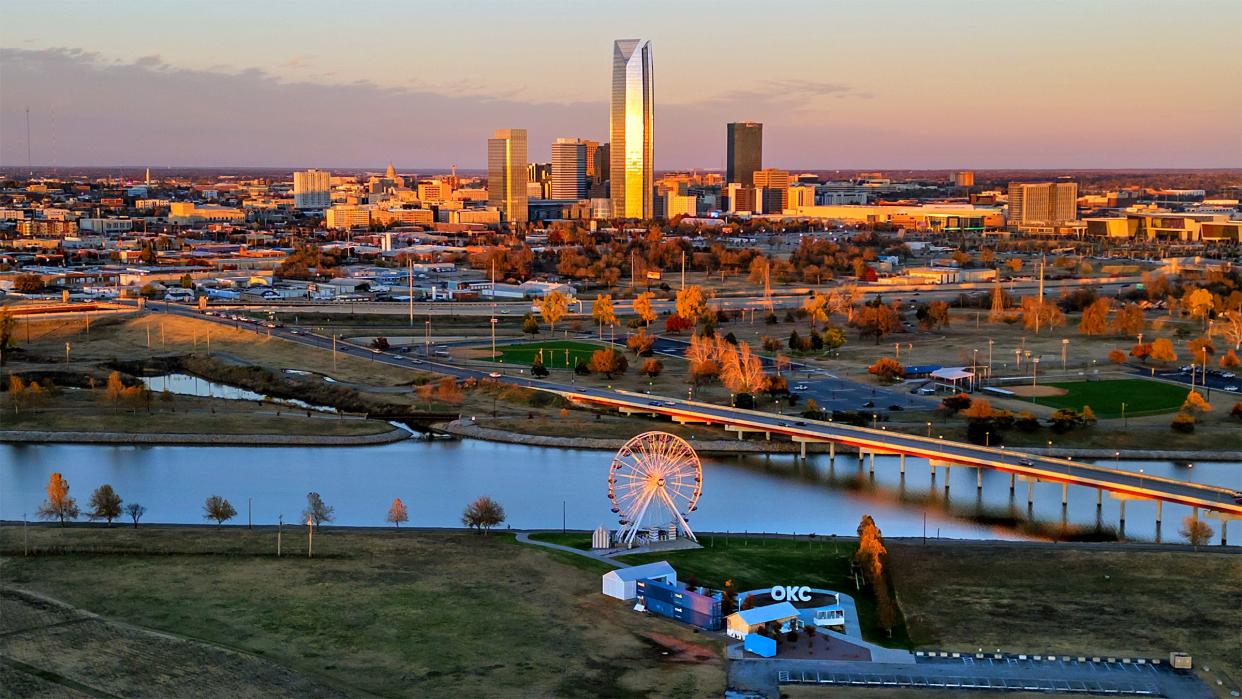
Downtown Oklahoma City is among the resilient in North America, overcoming pandemic shutdowns of offices, restaurants, hotels and concert venues that continue to cripple some of the country’s largest cities.
Researchers at the University of Toronto tracked cellphone data accumulated before the pandemic’s start in 2020 and then looked at the same data earlier this year. Their method of fairly ranking cities was to use jobs data, an algorithm to analyze clusters of people, and then added downtown definitions set in 2023 by the Brookings Institute.
That method determined downtown Oklahoma City saw a 93% recovery, ranking it fifth on the survey. Only Las Vegas, ranked first, experienced a full recovery. Jennifer Nakayama, president of Downtown OKC Partnership, said her organization’s data tracking matches the conclusions of the Toronto study.
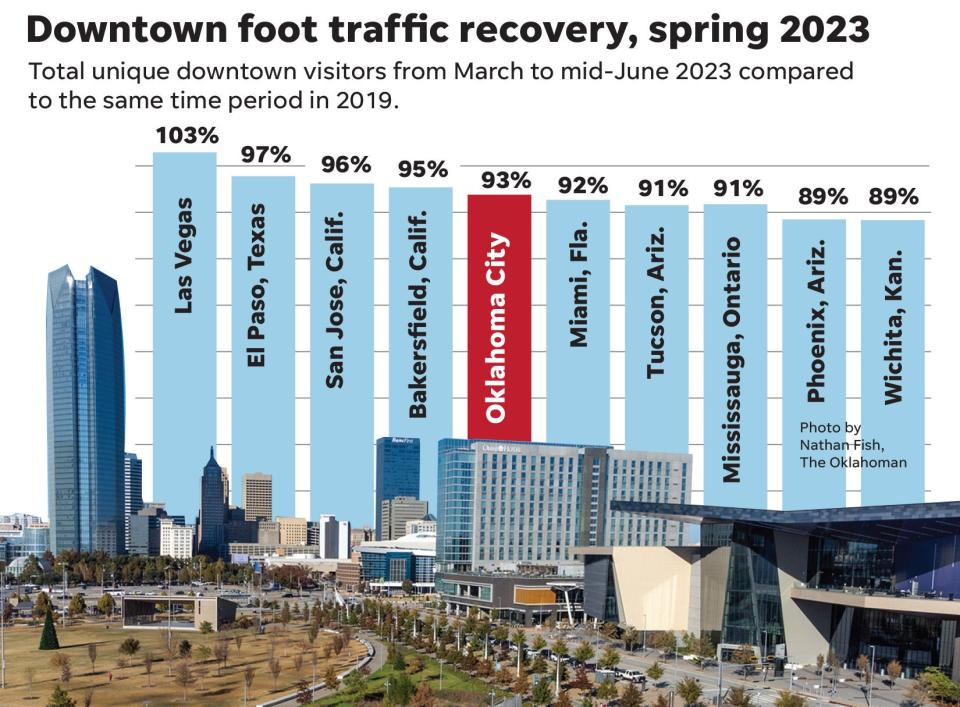
“It does align. We've looked back to 2019, pre-pandemic, and then the years since then and especially 2021 trending into 2022, there is an increase, whether it’s single visits, or repeated visits, or employees coming back to downtown.”
The data collected by Downtown OKC Partnership, also using cell phone activity, also showed a steep decline that took place in 2020, Nakayama said.
“But from a downtown perspective, it did not hit Oklahoma City as majorly as some other major metropolitan areas based on colleagues I’ve spoken to across the nation,” Nakayama said. “But there was a 50% decline from 2019 and into 2020. That sounds significant, but in other areas across the country, in equivalent size cities, larger cities, proportionately they saw an even bigger hit.”
More: After 40 years, Bricktown has become more than just a tourist destination
Karen Chappel, director of the university’s School of Cities, told The Oklahoman the numbers for Oklahoma City are even better when the boundaries used for the rankings are expanded to those set by the city’s planning department.
“If you draw a big polygon to include the areas south and southwest (of the older boundaries), then it does better,” Chappel said. “I was curious what’s in that area that helps it so much.”
Chappel’s observations aren’t just coincidence. The boundaries used for the Toronto study rankings largely follow those that existed through the late 1990s, leaving out Lower Bricktown, Film Row, Scissortail Park and the new convention center — all areas developed over the past dozen years.
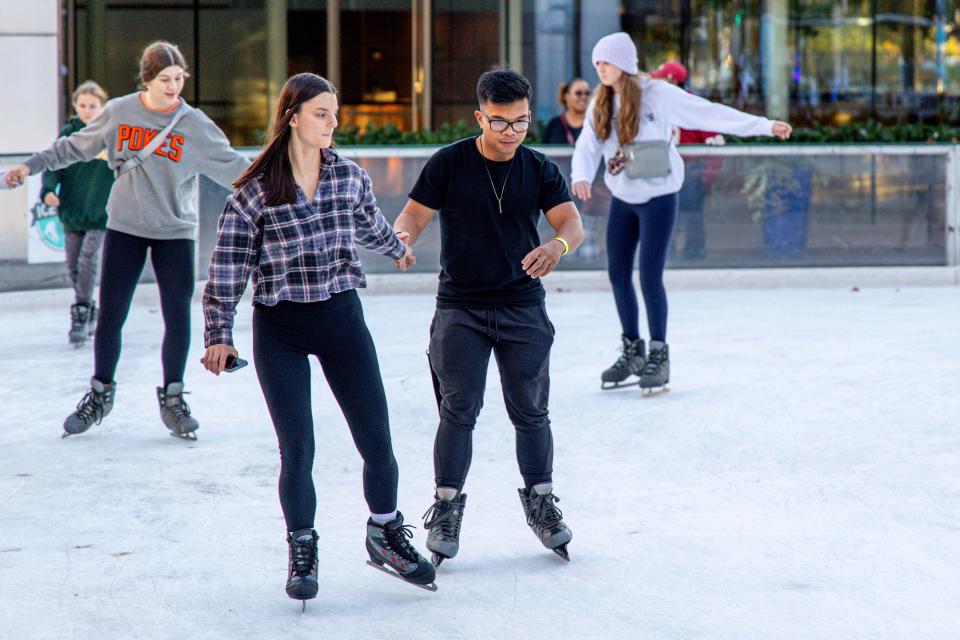
Visit OKC is reporting increased bookings at the new convention center while Scissortail Park, which opened in September 2019, is attracting thousands of visitors with an array of concerts, markets and festivals. Maureen Heffernan, director of the Scissortail Park Foundation, said an estimated 400,000 people visited the park in 2023, including 20,000 who attended a Chris Young concert in the park in October.
“We just do so much at the park,” Heffernan said. “People drive here just to walk in the park. It's a great place to walk; you’re in the middle of things, you’re downtown. There are always people here. If you come out early in the morning, you see people jogging and walking, and you see different people at night and on the weekends.”
Once high-flying downtowns struggling while Oklahoma City thrives
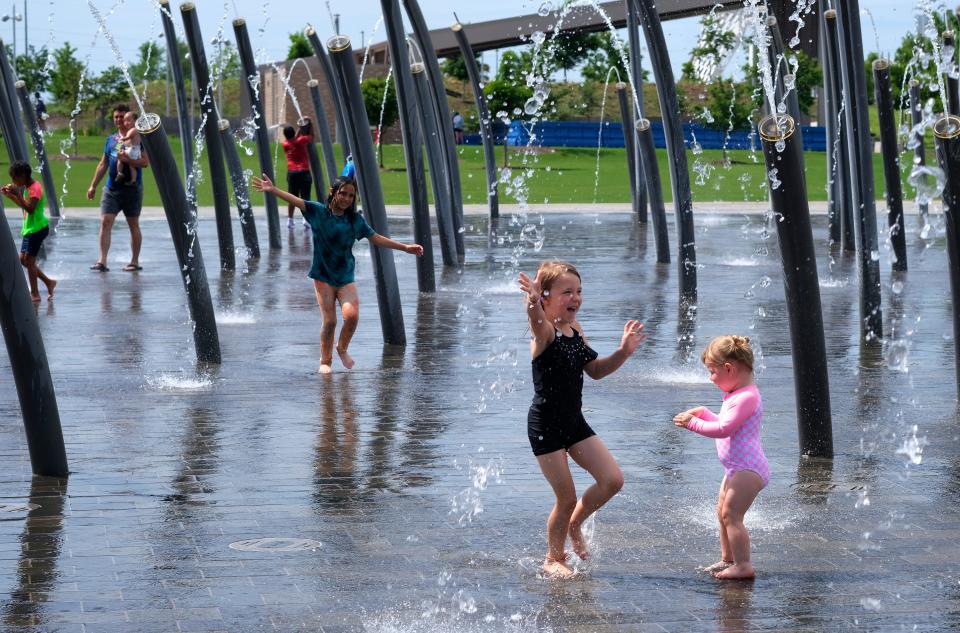
No city in America escaped the COVID-19 pandemic that started in March 2020. Oklahoma did not mandate shut-downs to the degree as other states, but the Centers for Disease Control and Prevention reports just under 20,000 Oklahomans died from COVID-19, making it the second-deadliest state in the country.
Chappel said the study shows Oklahoma City took less of a hit than other cities, even with a drop of 50% in visitor traffic during the early months of the pandemic when hotels and restaurants throughout the pandemic shut down or limited operations.
“That (50% drop) sounds significant,” Chappel said. “But in other areas across the country, those of equivalent size, larger, or even smaller, proportionately they saw a bigger hit when the pandemic took over.”
Cities that were held up as models of downtown development — San Francisco; Portland, Oregon; and Seattle — are among those now struggling to recover. Chappel attributed the dominance of one employment base for the troubles in those cities while Oklahoma City’s downtown employment base is more diverse.
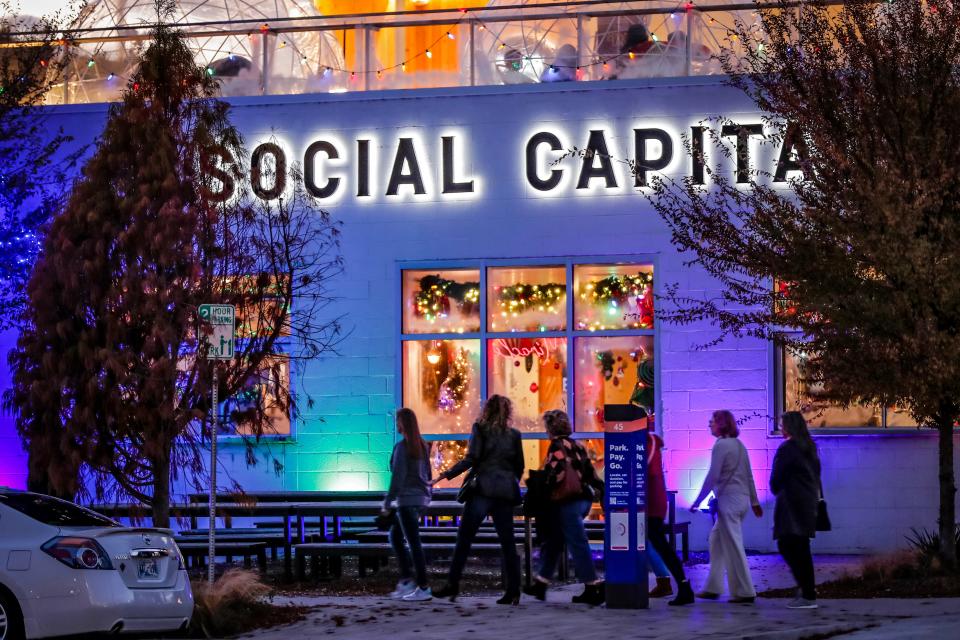
“Portland in particular is at the bottom (of the list) because its economy is so specialized ... reliant on tech and financial services and professional services,” Chappel said. “San Francisco is coming back a little bit because of AI, but the one thing we’ve noticed is that the daytime work days are quite different from the weekend patterns. On weekends they are back to normal. But the weekday traffic is really lacking.”
Chappel said those numbers indicate San Francisco is seeing a rebound in tourism and visitors but not as much with its workforce. Commute times, she said, also contribute to the recovery difference between Oklahoma City and cities like San Fransisco.
“The cities that have the mega-commute times are the ones where people have been decided to stay home rather than come in for work,” Chappel said. “But your commute times are well below average for the country.”
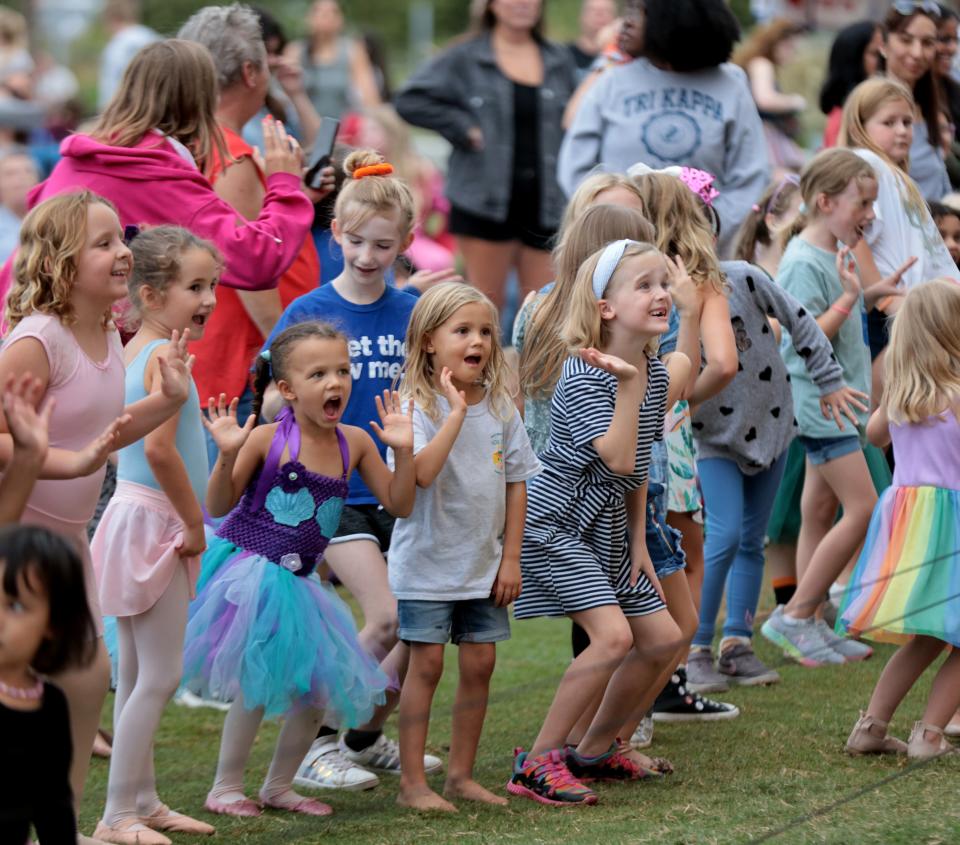
Downtown OKC still has some pain points, especially with restaurants
Downtown is not yet and may never be “business as usual.”
Jim Glover, co-owner of the Ground Floor Cafe at Leadership Square, is seeing some recovery in business, including a boost this fall, but is among downtown restauranteurs who have struggled with the traffic patterns that changed during the pandemic.
The building lost two major tenants, Enable Midstream (which was acquired by Texas-based Energy Transfer) and Oklahoma Gas and Electric. Other corporate tenants across downtown reduced operations when they allowed employees to work at home.
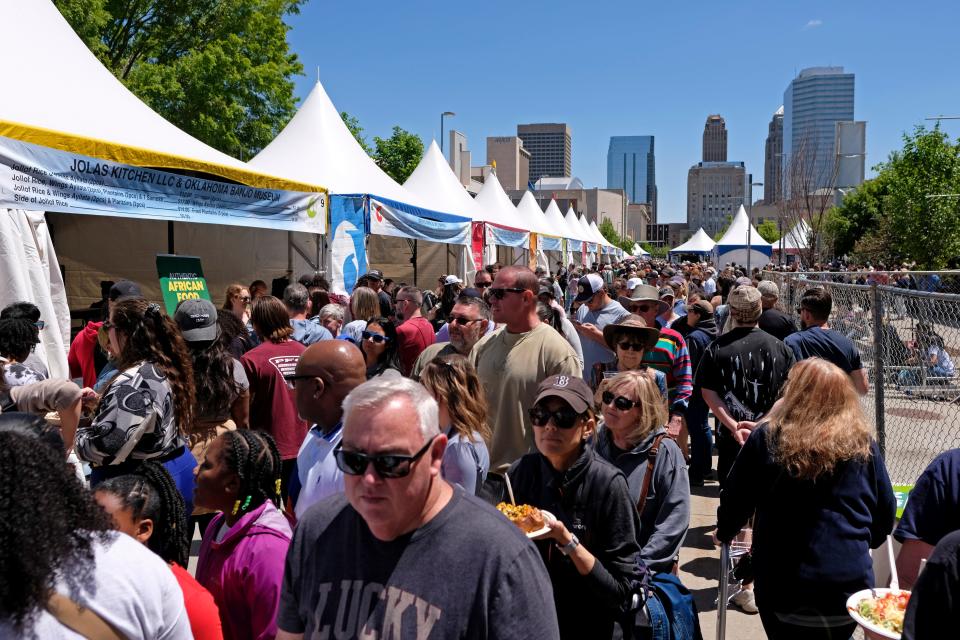
A Price Edwards 2023 mid-year survey reported vacancy at Leadership Square stood at 37%. Downtown aggregate vacancy rates decreased from 25.7% to 25.%. The slight improvement, however, was attributed to Dick Tanenbaum starting conversion of two office buildings to apartments.
“Since summer, we’ve seen an upswing, a bit, but our numbers have increased slightly,” Glover said. “Our numbers flow with how the building flows. Unfortunately, Leadership Square lost two major corporations.”
More: The pandemic completely changed where people work. It's left downtown OKC businesses struggling
A temporary move of the district attorney’s office, with its 150 employees, to Leadership Square helps. Glover said the pandemic’s impact on office occupancy is exacerbated by rising food costs.
“We’re doing OK,” Glover said. “Ten years ago, we were probably averaging $2,300 to $2,500 a day. Now our prices are 50% higher and we’re averaging less than $2,000 a day.”
In addition to seeing new customers from the district attorney’s office, Glover said he also is seeing downtown visitors.
“I’m seeing a lot of new people,” Glover said. “I think we’re seeing a lot of tourists.”
What's next for development in downtown Oklahoma City
Glover said he believes the recovery will continue next year, and he credits his landlord, Mark Beffort, for helping him survive the pandemic with constant support, including waiving his rent during the office shutdown.
Beffort is part of an ownership group that owns some of downtown’s largest office buildings, including Leadership Square, City Place, Oklahoma and Corporate Towers.
“Very few companies completely shut down,” Beffort said. “When you look at the big ones, Continental and Devon, yes, we had a remote work policy for a a time, but they’ve gone back to work,” Beffort said. “Some companies are a three- or four-day work hybrid, but for the most part, people are back in the office.”
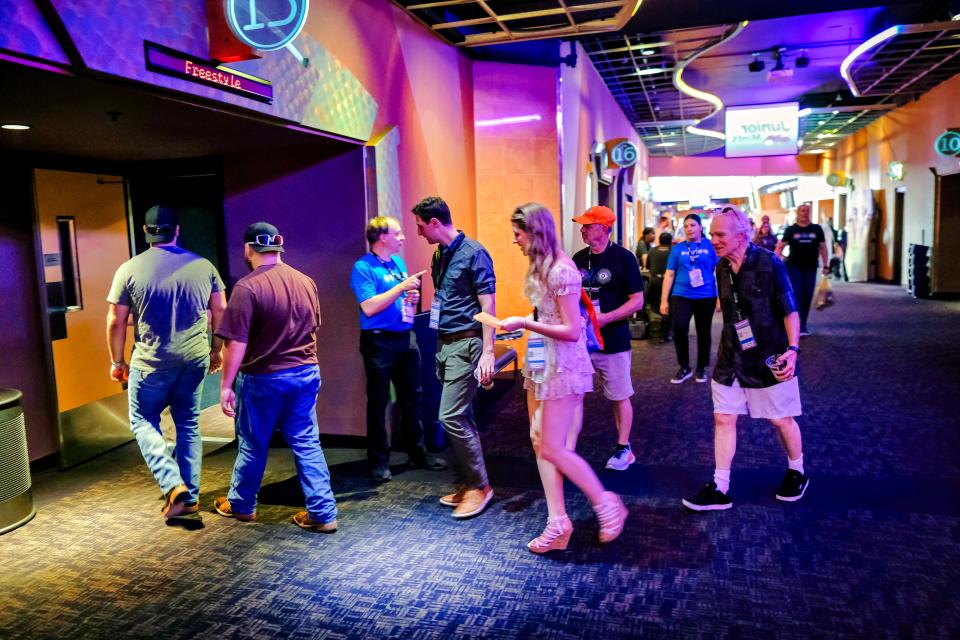
Hundreds of new employees moved downtown with relocation of KWTV and Griffin Communications to Century Center, and up to 2,000 state employees work at Oklahoma Commons, the former SandRidge tower that was largely empty when several state agencies relocated downtown in late 2020.
Beffort said he expects the recovery of the downtown workforce to continue with leasing underway for 125,000 square feet at his properties with new to downtown tenants. He also said he expects the conversion of some office space to residential to continue in 2024.
Nakayama, who was hired as president of Downtown OKC Partnership in February, previously oversaw the business improvement district in Waikiki, Hawaii. She said she saw downtown Oklahoma City was on a steady growth pattern before the pandemic but didn’t see the overbuilding that took place in other cities now struggling to recover.
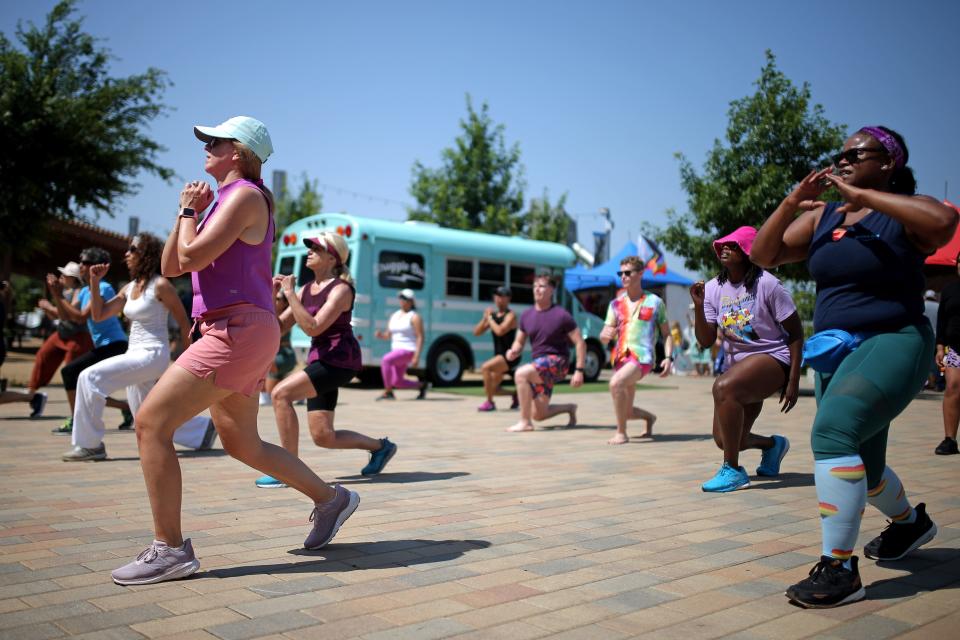
“The pandemic was definitely a hiccup,” Nakayama said. “But it didn’t stop us as a city from continuing that trajectory. Oklahoma City is resilient, especially downtown.”
Construction cranes, meanwhile, have popped up throughout the greater downtown area with construction of the three office buildings in Midtown and one in the Innovation District and yet another where OKANA is being built along the Oklahoma River.
“Those projects were ready to go,” Nakayama said. “It wasn’t about going back to the drawing board, raising funds and starting over because the pandemic blasted away everything we had going forward. One of the reasons my family and I chose to go to Oklahoma City is we saw firsthand the commitment to that growth.”
Chappel said she sees a full recovery ahead for downtowns in North America. She said the conversion of older office space to housing will continue and cities will find ways to reinvent their downtowns and bring in more diverse uses.
“The growth patterns will resume,” Chappel said. “It's just takes time.”
This article originally appeared on Oklahoman: OKC COVID-19 pandemic recovery is among the best in North America

